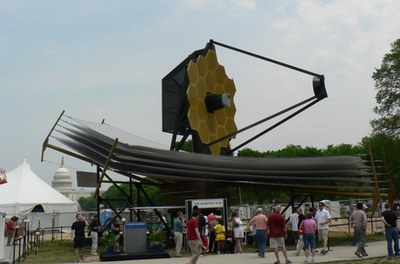

This effort will not only reveal the age of the galaxies' light but also their chemical composition, size and temperatures.Īstronomers think the first stars, which were first born from collapsing gas clouds around 100 million years after the Big Bang, were composed mainly of lighter elements, such as hydrogen and helium. This device uses tiny, 0.1 millimeter-long, 0.2 millimeter-wide adjustable mirrors that only let in light from target galaxies, tuning out background radiation so that astronomers can break down a galaxy's stars by color. To confirm that the galaxy is as old as its redshift suggests it is, astronomers will use spectroscopy to analyze the magnitude of light across a range of wavelengths for all the galaxies Webb's Near Infrared Spectrograph instrument has found so far. Instead, they were compiling a list of 55 early galaxies (44 of which had been observed previously) to investigate how bright they were at various points in time after the Big Bang - a measure that will give them important insight into the evolution of the young universe. Remarkably, the researchers who found the image weren't even looking for the most distant recorded galaxy. James Webb Space Telescope will study Milky Way's flaring supermassive black hole James Webb Space Telescope's 'jewel-filled' photo is stunning. The James Webb Space Telescope's first images are here, and they're spectacular

The newly described record-breaking image was obtained during the Cosmic Evolution Early Release Science Survey (CEERS) - a deep- and wide-field sky survey conducted by the telescope. Since the telescope released its incredible first images on July 12, it's been flooding the web with photos of fascinating distant objects. The impact left "uncorrectable" damage to a small part of the telescope's mirror, but this doesn't seem to have affected its performance, Live Science previously reported. Their progress was briefly interrupted after the telescope was unexpectedly struck by a micrometeoroid sometime between May 23 and May 25. Webb's extreme sensitivity to infrared frequencies means that it must be isolated from disruptive heat signals on Earth, and the telescope now rests at a gravitationally stable location beyond the moon's orbit - known as a Lagrange point - after being launched there from French Guiana atop an Ariane 5 rocket on Christmas Day 2021.ĭuring the six months following Webb's launch, NASA engineers calibrated the telescope's instruments and mirror segments in preparation for snapping the first images. The findings have not yet been peer-reviewed. The researchers, who outlined their findings in a paper posted July 26 to the preprint database arXiv, found that the newly discovered galaxy has a record-breaking redshift of 16.7, which means its light has been stretched to be nearly 18 times redder than if the expanding universe wasn't moving the galaxy away from us.


 0 kommentar(er)
0 kommentar(er)
